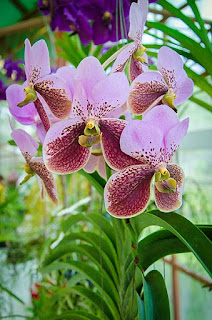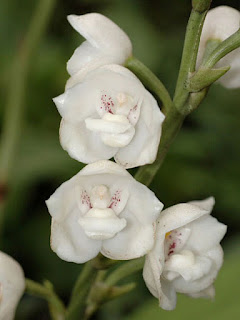How the female hornbill is imprisoned while she hatches the eggs
- Get link
- X
- Other Apps
By
Monusha.J.J
-
 |
| Hornbill (Image courtesy: wikimedia commons) |
Like the toucan, the hornbill has an extremely large beak. The beak is different because it continues above the bird's head to form a sort of knob that looks like a helmet. There are forty five different species of hornbills, with loud, croaking voices and flapping wings. Their strong beaks can break the shells of the hardest nuts, but they will also eat fruits, insects and small animals.
Most hornbills build their nests in a hollow tree. The male bird imprisons the female inside her nest by walling her in with dried mud while she hatches the eggs and cares for the young until they can fly. He leaves a small slit in the mud wall and through this he feeds his mate during the whole period she is sitting on the eggs (the female of small species lay up to six eggs and incubates them for 25 days). Female hornbills remain trapped inside the nest for three to five months.
- Get link
- X
- Other Apps
Popular posts from this blog
Great Wall of India
By
Monusha.J.J
-
We have all heard of the Great Wall of China. But have you heard about the Great wall of India, the second largest wall in the world? Kumbhalgarh fort wall ( Image courtesy: Heman kumar meena / wikimedia commons ) It is built in 500 years ago and it guards the ancient fort of Kumbhalgarh, located 80 km north of Udaipur, Rajasthan, India. It is the second largest fort in Rajasthan after Chittorgarh fort and also the UNESCO World Heritage Site included in Hill forts of Rajasthan. The fort wall extends to the length of 36 kilometers and is popularly known as the "Great wall of India".
Waling-waling : "The Queen of Philippine flowers"
By
Monusha.J.J
-
Waling-waling Image courtesy: I Travel Philippines / Wikimedia commons ( CC BY 2.0 ) Waling-waling ( Vanda sanderiana) is known as "The Queen of Philippine flowers". It is a beautiful flower in orchidaceae family, commonly known as Waling-waling or Sander's Vanda. This species was described by Heinrich Gustav Reichenbach in 1882.
Holy Ghost Orchid
By
Monusha.J.J
-
Peristeria elata , the national flower of Panama is a species of orchid commonly known as dove orchid, or holy ghost orchid. Family : Orchidaceae Peristeria elata (Image courtesy: TommyCrash / wikimedia commons ) Distribution : It is widely distributed in the American tropics from Costa Rica and Panama south to Peru and Brazil. Habitat : It is found in shaded grassland edges in tropical forests at altitudes of 100 to 700 m. Characters: They have teardrop-shaped (ovate) pseudobulbs covered with papery sheaths. The leaves are simple and lanceolate-elliptic in shape with a plicate leaf surface which arise from the apex of pseudobulbs and the inflorescence are arise from the base of the pseudobulbs may be pendulous or erect and from 6 inches to 4 feet long, bearing 4-20 flowers. The base colour of the flowers is white with some pink or red spots. The flowers are fragrant and...




Comments
Post a Comment